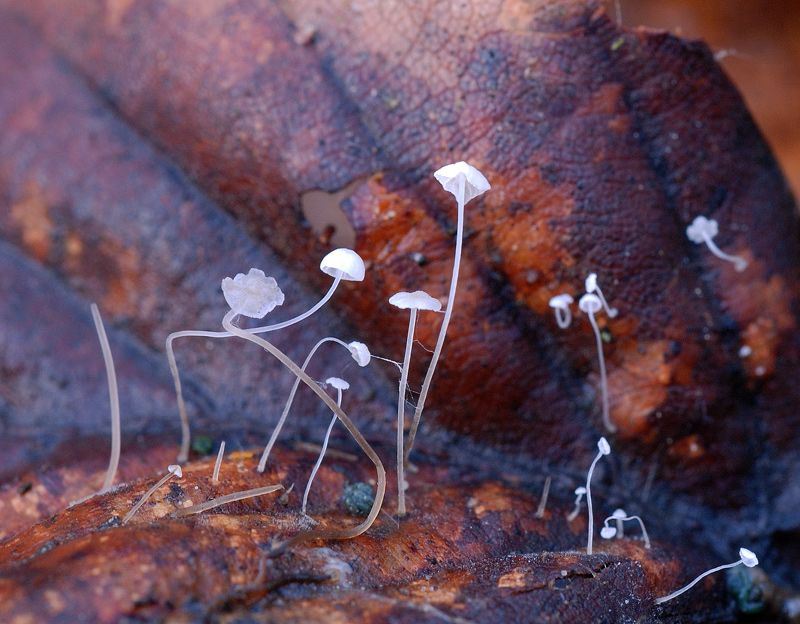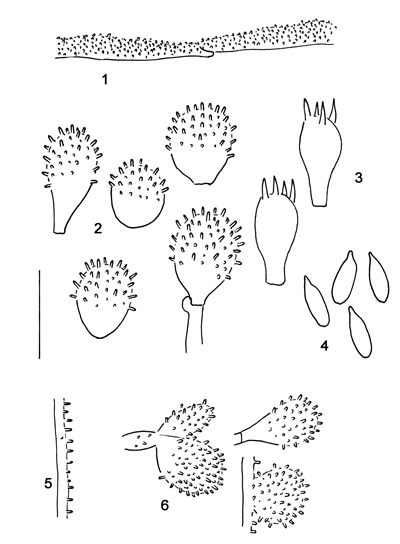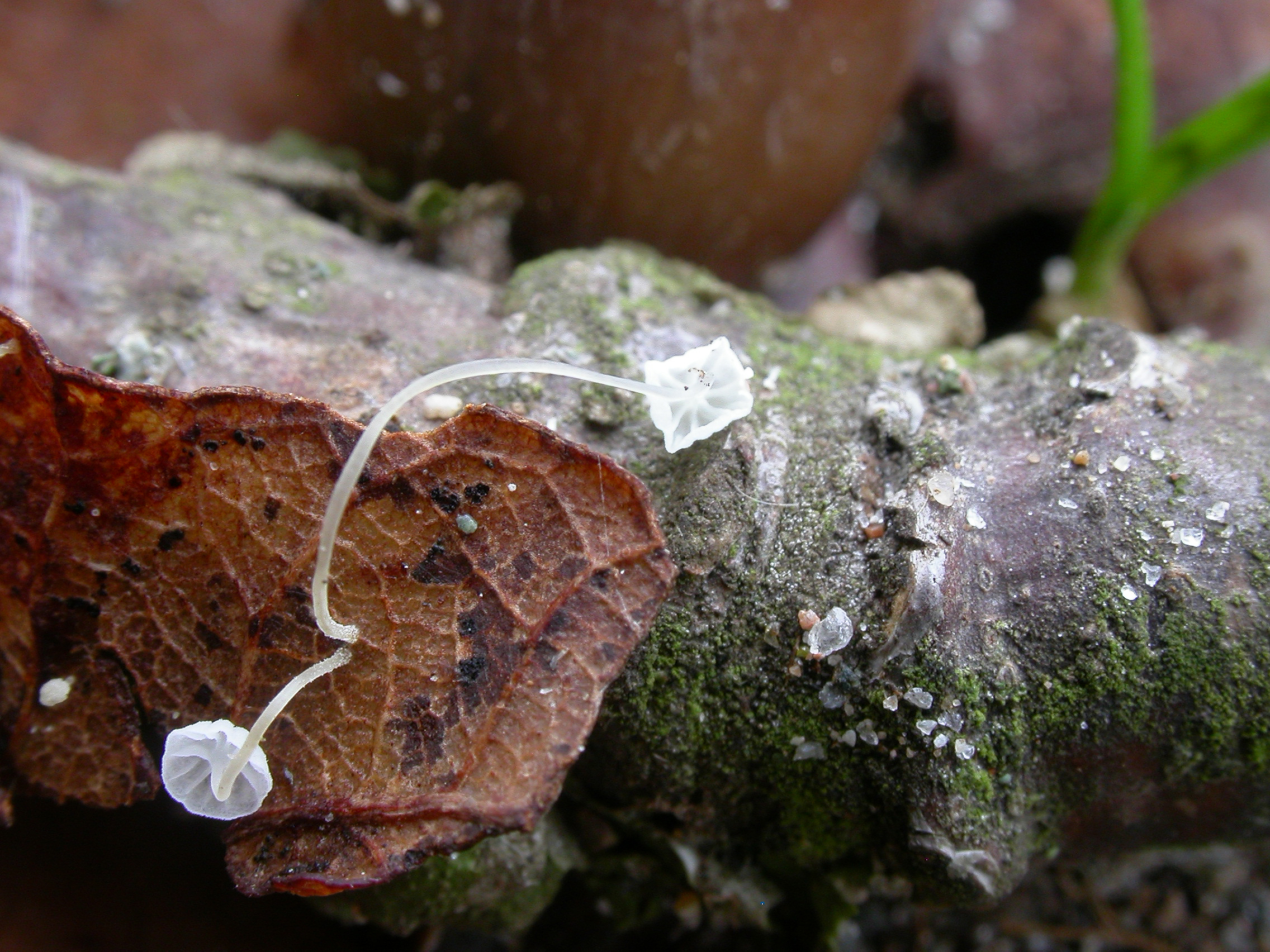Mycena capillaris
Mycena capillaris
Description
1. Hyphae of the pileipellis, 2. Cheilocystidia, 3. Basidia, 4. Spores, 5. Hypha of the cortical layer of the stem, 6. Caulocystidia.
Cap 1-3 mm across, hemispherical or conical to convex, often slightly depressed, pruinose, glabrescent, sulcate, translucent-striate, whitish grey to white, sometimes with darker centre. Gills 6-10 reaching the stem, very narrow to fairly broad, adnexed to adnate, sometimes pseudocollariate, whitish grey to white, the edge white. Stem 20-40 x 0.25 mm, flexuous, pruinose, glabrescent except for the usually puberulous base, shiny, when very young entirely blackish or dark grey or blackish or only dark grey at the apex, becoming grey to grey-brown, soon watery white, the base ± bulbous, sometimes attached to the substratum by a patch of radiating, dark brown to blackish, minute fibrils, but often insititious. Odour none. Basidia 17-21 x 6-8.5 µm, clavate, 4-spored (rarely 2-spored). Spores 8.5-11.5(-13.5) x 2.8-4.5 µm, Qav ˜ 2.1, ± cylindrical (more so in 2-spored form), amyloid. Cheilocystidia 14-26 x 7-15 µm, forming a sterile band, clavate to obpyriform, covered with evenly spaced, cylindrical, straight, simple excrescences or warts 2-4.5 x 0.5-1 µm. Pleurocystidia absent. Lamellar trama dextrinoid. Hyphae of the pileipellis 4-15 µm wide, densely covered with warts or short cylindrical excrescences. Hyphae of the cortical layer of the stem 2.5-3.5 µm wide, densely covered with short cylindrical excrescences 1-2 µm long. Caulocystidia at the base of the stem 5-15 µm wide, clavate, obpyriform or spheropedunculate, densely covered with short, cylindrical excrescences. Clamps abundant in 4-spored form, absent in 2-spored form.
Ecology and distribution
Gregarious on fallen, decaying leaves of Fagus. Possibly also rarely on leaves of Quercus and Salix. Occurring late in the autumn. Common in the area where beech occurs.


